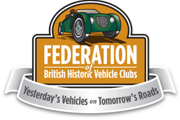India in Reverse Gear (part 2): Advantage of Historic Vehicles

Published: 15/12/2020
By Gautam Sen
Image - This Rajdoot Bobby bike is part of India’s automotive history. (Courtesy: Lokesh)
At a recent auction held in Mumbai, a Cadillac Series 61 Sedanette, from 1948, went for Rs56.9 lakh. A similar car in the US, in similar condition, would, at most, fetch around $25,000, or Rs18.5 lakh. From what one hears, this car may have been imported from the US in an unrestored state, available usually for under $10,000, or within Rs7.4 lakh. Even after paying the transport and the duty of 251% on the import of cars from before 1950 (legally possible since 2014), the landed cost of the car would, at most, have been under Rs25 lakh.
The efforts that must have gone into restoring the car, refabricating the metal parts, redoing the upholstery, overhauling the mechanicals, and repainting the car after corrosion treatment, all entailing hundreds of highly skilled manhours, justifies the doubling of the value of the car. Thus, what the 'opening up' of the import of historic vehicles from before 1950 has done, is to encourage a burgeoning 'industry' of restoration shops across India, as hundreds of mostly unrestored cars have been imported, restored and then sold on to collectors, all the while adding value by significant sums, whilst bringing money into the government’s coffers. A win-win situation for everyone.
Yet, this was not possible until 2014. Until then, there was a universal ban on the import of older cars. Why? Because the government wanted to protect India’s automobile industry – the import of second-hand cars had killed the automobile industries of countries like New Zealand in the past. But those second-hand cars have been mostly five years old. At most, up to 10 years old vehicles may have an impact on the sale of new cars. Much older historic vehicles of 30-plus years cannot, and will not, have any impact whatsoever on the sale of modern new vehicles.
Thus, most countries in Europe allow the free import of vehicles which are more than 30 years old. In the US, the cut-off is 25 years old. Following the same logic, the Indian government should also decide on a 30 years old cut-off for historic vehicles and allow for the import of historic vehicles which are more than 30 years of age, thereby encouraging an industry of automotive restorations.
In fact, the government ought to go one step further: allow and encourage the restoration of automobiles belonging to clients abroad, an industry which has huge potential, as India has both skill and cost advantages. Poland and Morocco already have a burgeoning industry of automotive restorations, and India can surely match them for prices and abilities. More and more nations recognise the world of historic vehicles as heritage, the wealth of a nation, as well as an industry, which deserves to be encouraged.
"In the UK alone, there are more than 1.5 million historic vehicles, that is, all types of vehicles manufactured 30 or more years ago. Historic vehicles represent about 3% of the total UK vehicle park, which comprises more than 43 million registered vehicles of all types,” explains David Whale, chairman of the Federation of British Historic Vehicle Clubs (FBVHC).
“Results from the Federation’s 2020 national historic vehicle survey show that the value of the historic vehicle movement to the UK economy is over £7.2 billion, and this figure includes £946 million of spending by overseas enthusiasts on goods and services supplied by UK firms.” That is a mindboggling Rs71,000 crore of wealth, and an industry of Rs9,300 crore for restorations and exports of parts.
At the same time, a passion for historic vehicles as well as a sense of nostalgia has fuelled a resurgence in the demand for motorcycles like Royal Enfield’s Interceptor, which has been the highest selling middleweight motorcycle in the UK during 2020. Though a modern machine, the Interceptor draws inspiration from the original Interceptor from the 1960s, and explains the newfound success of Royal Enfield, which has grown from 31,000 units sold in 2006 to over 800,000 in 2019. Hoping to emulate Royal Enfield’s success will be two other British brands, BSA and Norton, both acquired by Indian companies, Mahindra and TVS, and revived given their historical significance, whilst our government is stymieing the very tenet of automotive history.
It’s about time the government realised that history can be a good business. And instead of coming in the way, it would make best sense to simplify everything and to define historic vehicles as those which are more than 30 years old (calculated from the year of manufacture). Additionally, the government should allow the import of historic vehicles which are more than 30 years old. It should also allow vehicles, which are getting restored in India for international clients, to be brought in and taken out with a system of bonds and other controls.
Import of vehicles which are more than 30 years old cannot have any detrimental effects on the automobile industry, and neither should the limited usage of a handful of historic vehicles during the weekends have any negative impact on controlling emissions.
The other points in the the ministry of road transport and highways (MoRTH) notifications are pure bureaucratic meddling. What purpose would a change in the number of registration plates serve? And what need is there for a committee consisting of three (made up of a bureaucrat, a member of the automobile association, and another authorised by the state) other than facilitating cronyism and corruption, and taking us back to the days of the license Raj?










